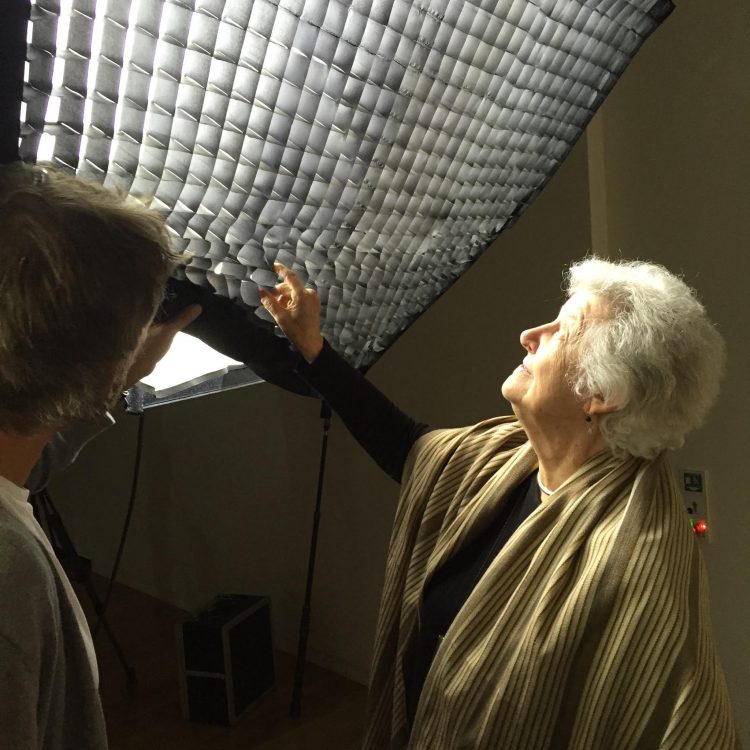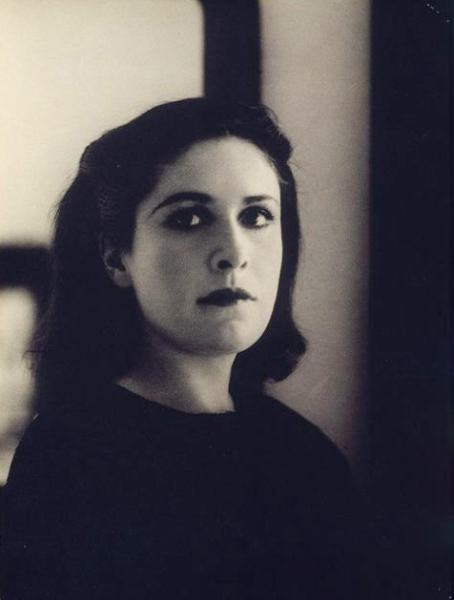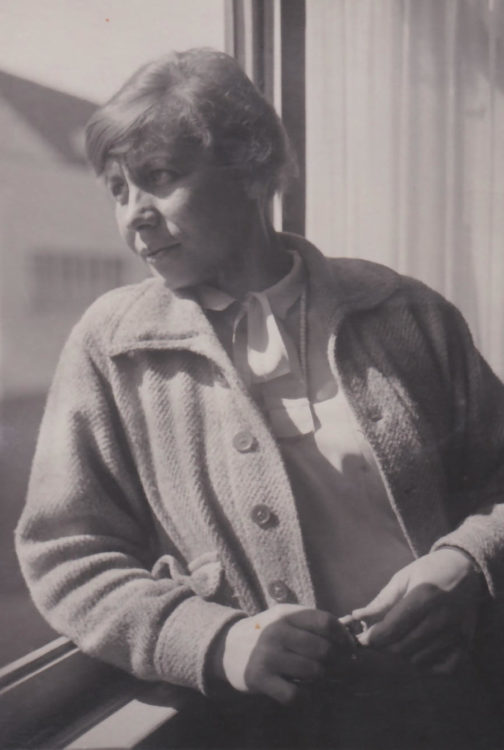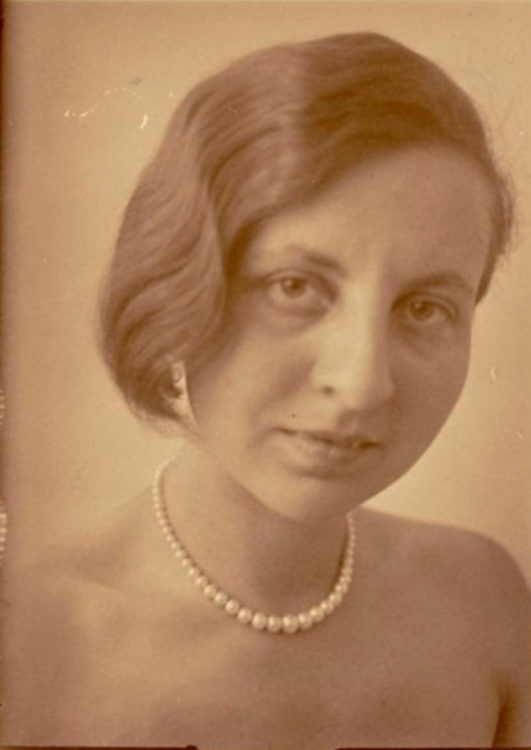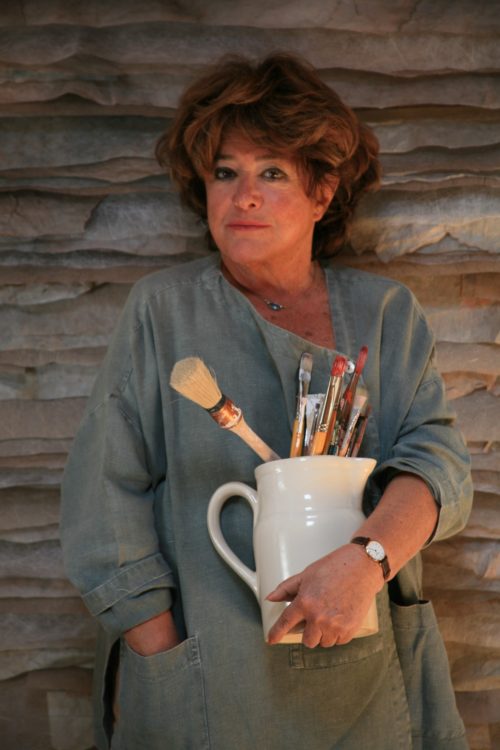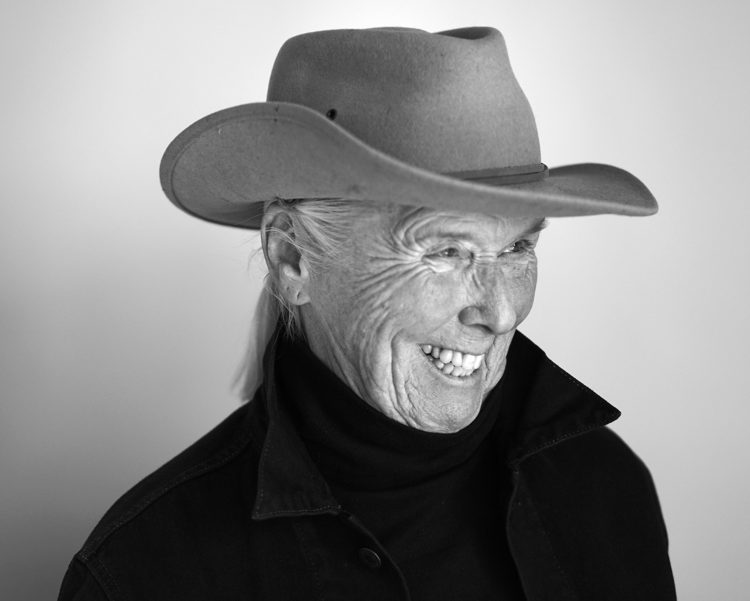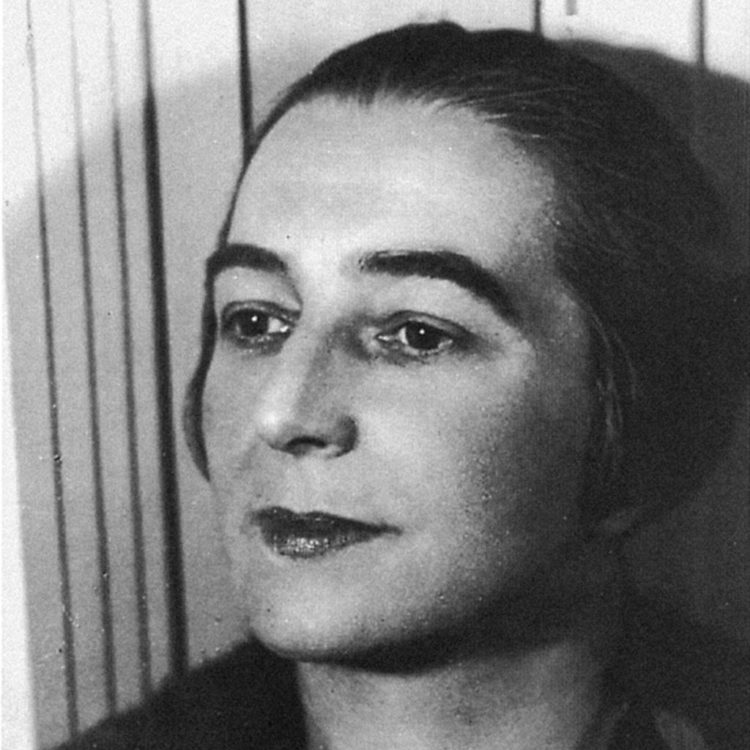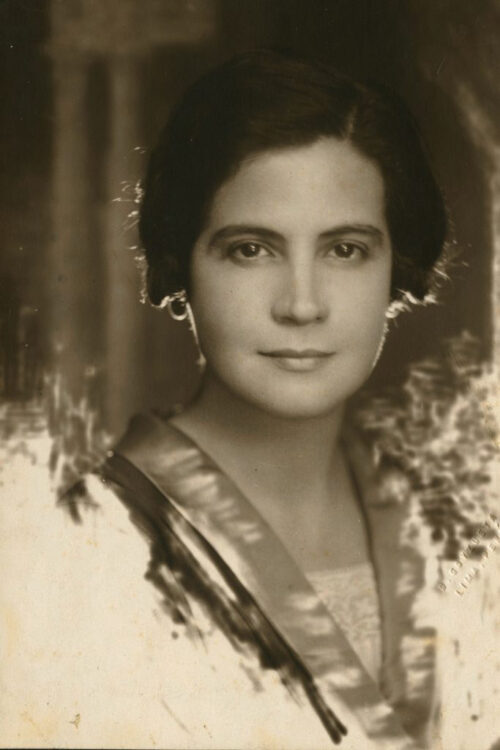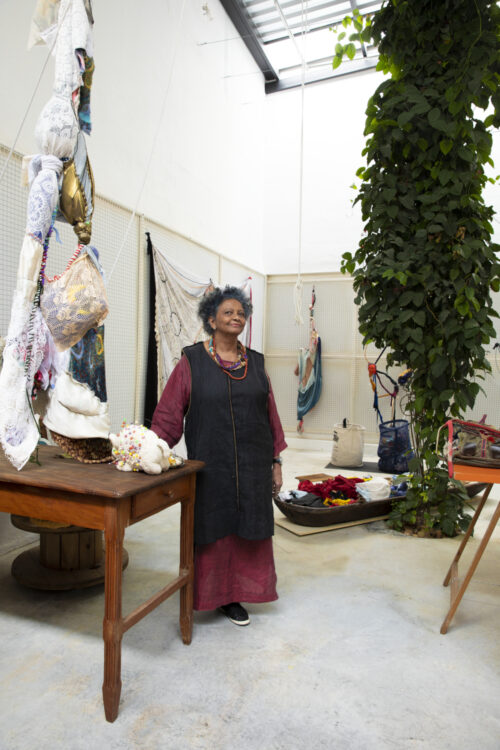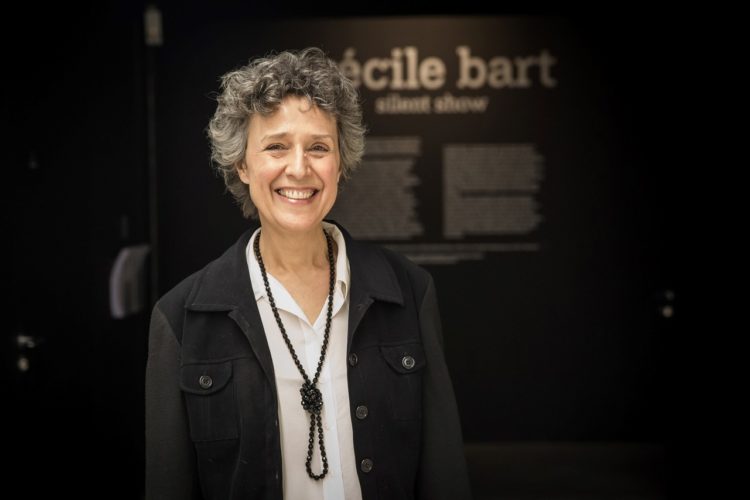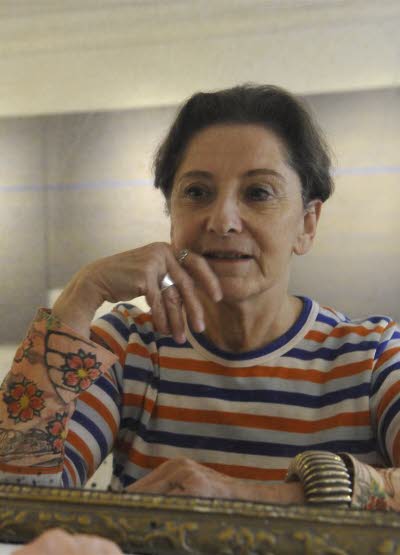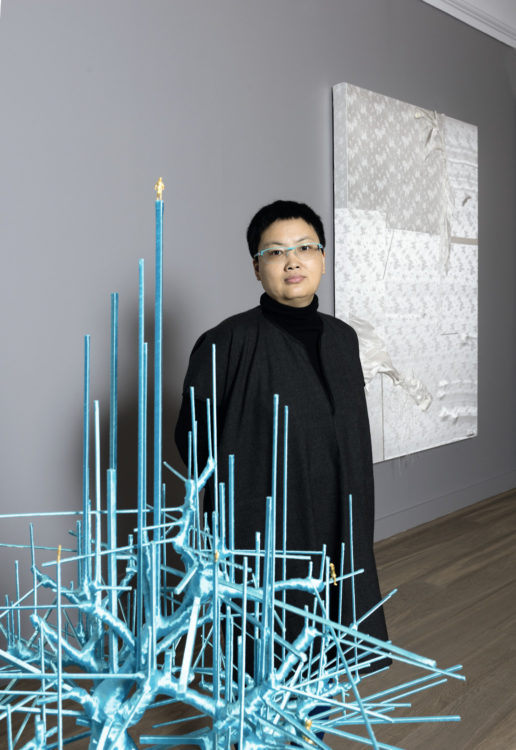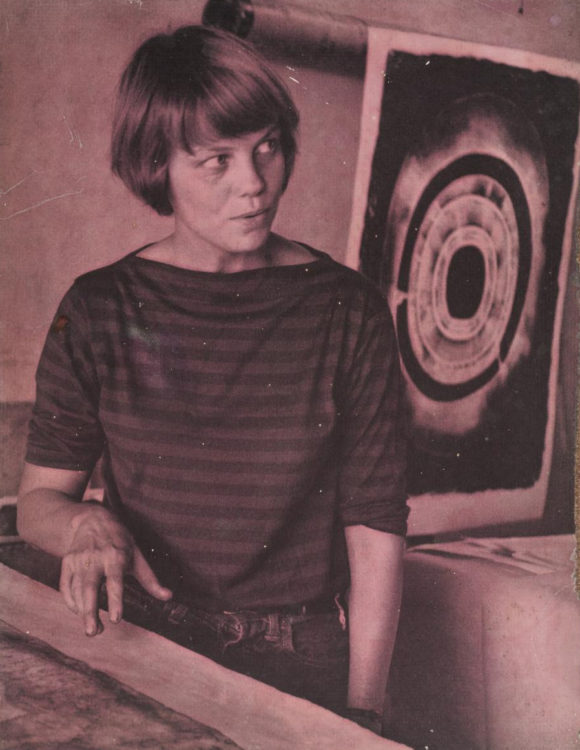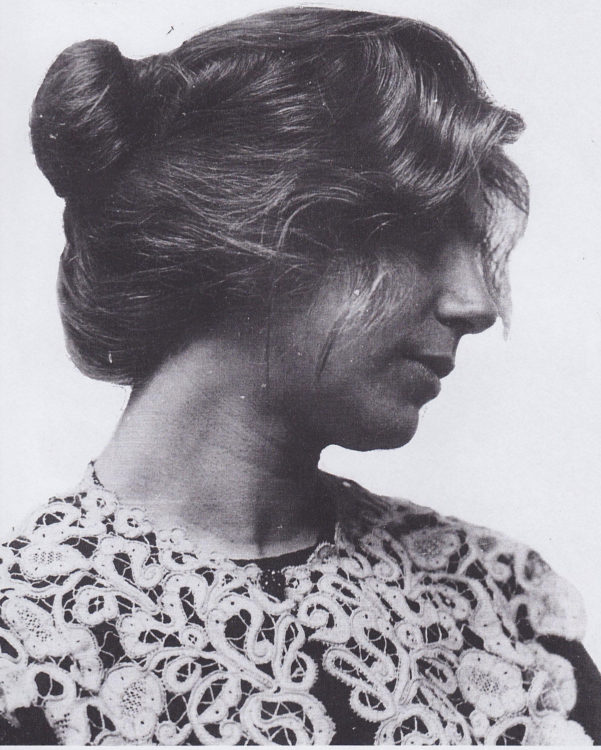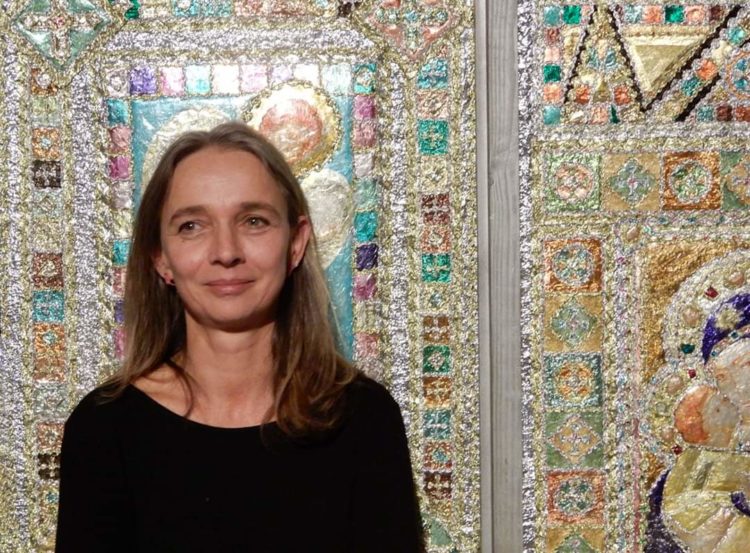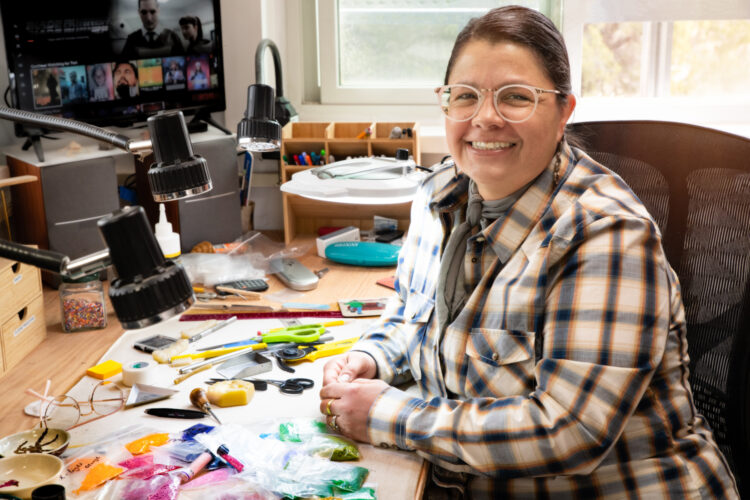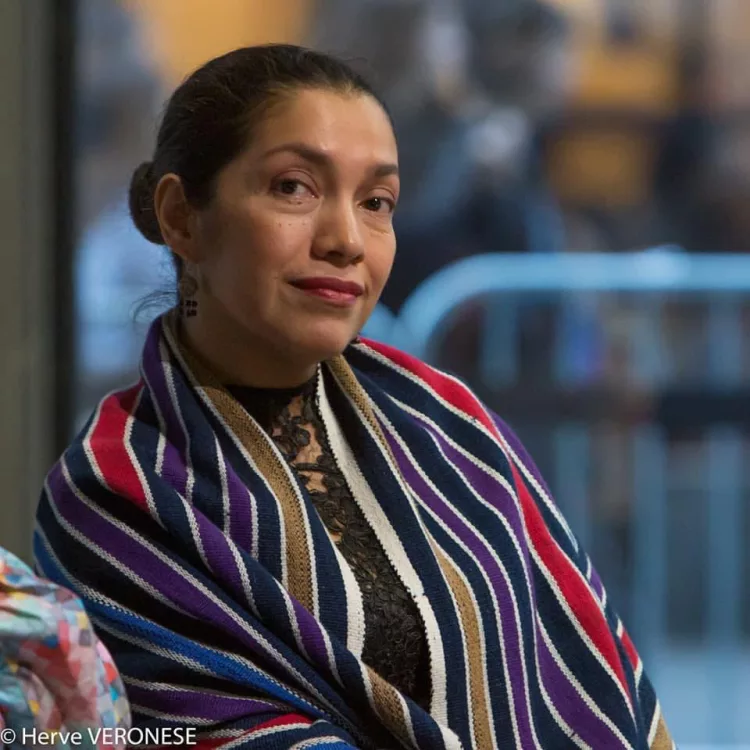Review
Suzanne Lalique-Haviland, Étude pour tissu à motifs de parasols, 1920, gouache on paper © Photo: Les Arts Décoratifs, Paris
The question mark at the entry to the exhibition seems to want to mitigate the deliberately outdated formula that precedes it, as in 2017 it would be somewhat reckless to claim that there are activities reserved for one sex in particular1. The idea here is to offer a glimpse of works made by women and conserved at the Museum of Decorative Arts rather than to question the artistic or technical capacities of the creators on show.
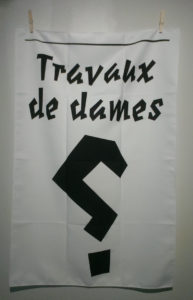
Exhibition view, © Eva Belgherbi
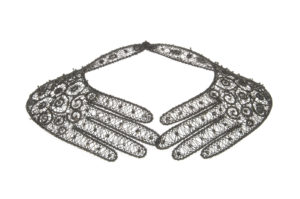
Jacomijn Van der Donk, Collier (Mains), 1994, oxidized silver lace © Photo Les Arts Décoratifs, Paris / Jean Tholance
Learning is present throughout the exhibition, whether it’s in the first room dedicated to the Women’s Committee, founded in 1895, which gave applied arts lessons for women at the school on rue Beethoven, in Paris, as of 18972. The inclusion of historical factors is inevitable as this is such a pivotal period in female artists’ struggles to obtain an artistic education equivalent to that given to their male counterparts3. The works carried out based on the Women’s Committee archives4 allow us to show previously unseen documents including photographs of workshops, school programmes and Dora Maar’s grades from 1923.
The soundness of this section is in contrast to the confusion of the two following section. The reappropriation and rehabilitation of textile arts – a domain long considered as a minor and traditional one, incompatible with artistic creation – by the “Nouvelles Pénélopes” of the 20th century is quite explicit and demonstrated with the works of Sheila Hicks and Violeta Parra. On the other hand, the “Vous avez dit Femmes ?” [“Did you say Women?”] section infers a blurring of gender of some of the female artists which would apparently be due to their use of certain methods considered as hard – masculine? – such as porcelain, enamel, glass-making and bronze work. Some of the comparisons are ambiguous when you find side by side the rotogravure Métal (1927) by Germaine Krull, a two-part work by Rei Kawakubo (2007) and the painting Nature morte à l’armure (1670) by Madeleine de Boullogne. By attempting to avoid a classical chronology and bringing together works under a common theme, the exhibition might just risk losing some of its visitors.
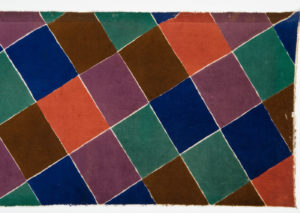
Sonia Delaunay, morceau de tissu « Tissu simultané n° 189 », 1926-1927, cotton velvet, wood board print 5 colors © Photo Les Arts Décoratifs, Paris / Jean Tholance

Exhibition view, © Eva Belgherbi
There is however an evident desire to overcome stereotypes on women and the field of applied arts but there are some subtleties that we may not grasp, without sufficient knowledge of the artists who hail from different periods and countries and have different backgrounds in training; the only common denominator remaining is their gender and this therefore weakens the bearing. In spite of a rich display and a stimulating play on the obsolescence of its title, the desire to learn more – about these female artists and the research work carried out prior to the exhibition – is also limited by the regrettable absence of a catalogue. This generous exhibition of 200 works still remains an opportunity to have the pleasure of viewing once again certain works by Niki de Saint Phalle, Sonia Delaunay, Laure Albin Guillot and Elsa Schiaparelli, and to discover unusual and rarely exhibited items such as the sculpture Massacre (2008) by Valérie Delarue.
At musée des Arts décoratifs, Paris (France), from 8 March to 17 September 2017.
In her famous essay Why Have There Been No Great Women Artists?, published in 1971, in particular in ARTnews, January 1971, Linda Nochlin refutes the existence of a feminine art, which would be collective through the ages and through all countries to female artists.
2
See “Le Comité des Dames. La formation artistique des femmes au sein de l’Union centrale des arts décoratifs (1892-1925)”, written by Guillemette Delaporte, Marie-Amélie Tharaud, Elise Kerschenbaum.
3
In France, women only gained access to the École des beaux-arts de Paris as of 1897 then, in 1900, they gain access to non-mixed classes and can finally compete for the Prix de Rome as of 1903 (see Marina Sauer, L’Entrée des femmes à l’École des beaux-arts, 1880-1923, Paris, ENSBA, 1990). The history of the practice of decorative arts – called minor as opposed to the major, taught at Beaux-Arts – is also particularly connected to that of women artists at the end of the 19th century (see Catherine Gonnard, Élisabeth Lebovici, Femmes artistes/Artistes femmes. Paris, de 1880 à nos jours, Paris, Hazan, 2007, p. 14-18).
4
Conserved in the library of the Museum of Decorative Arts.





